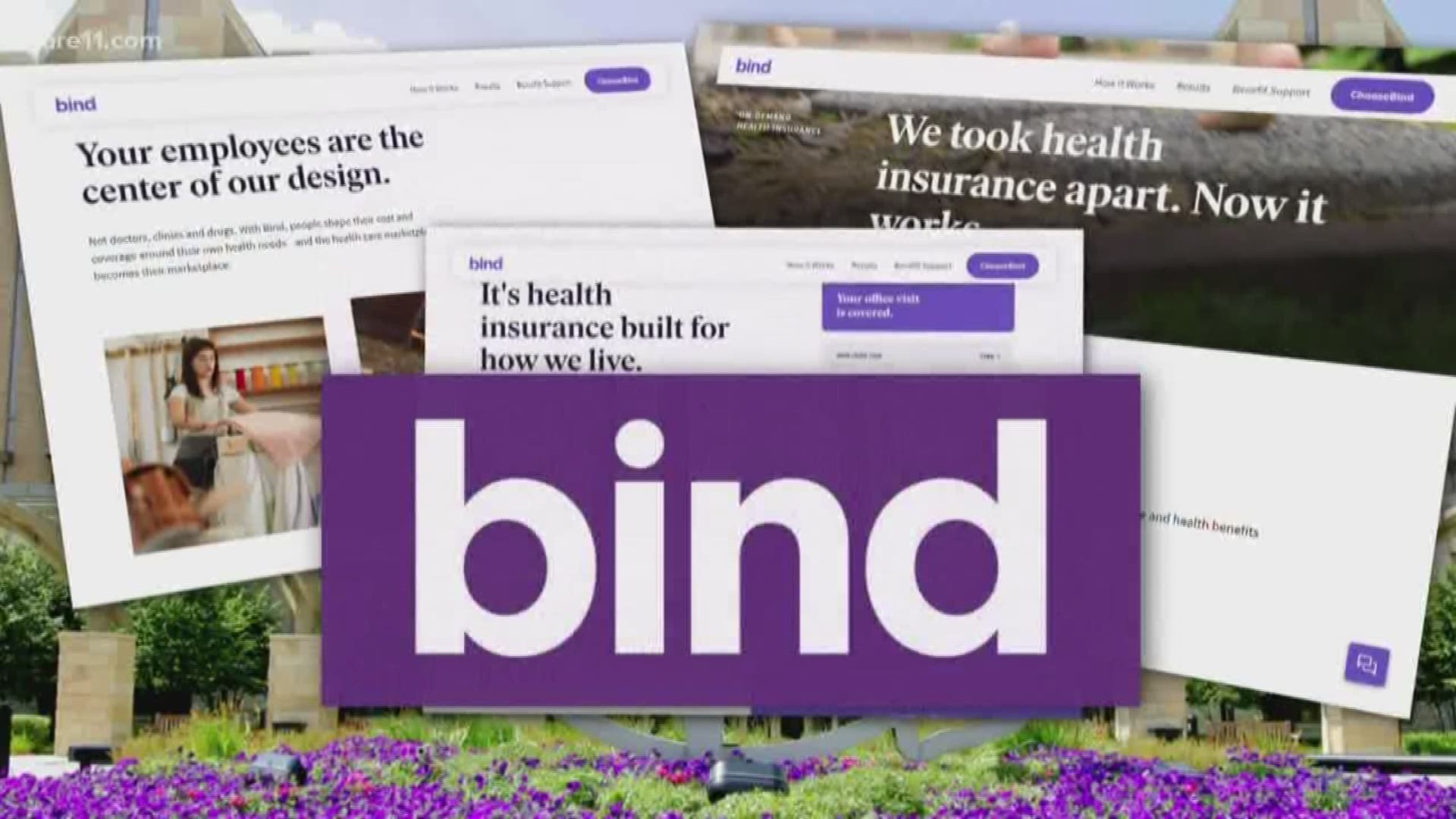MINNEAPOLIS — MINNEAPOLIS -- What if you could buy health insurance for heart surgery the moment after your doctor said you need heart surgery?
Bind, a Minnesota-based digital insurance start-up, is taking on the current insurance industry models by offering what it calls on-demand health coverage.
‘On-demand’ and ‘health insurance’ sounds counterintuitive. After all, insurance is designed to pool ‘what-if’ money so that when something expensive does happen, there’s enough money to cover it.
But Bind says it can save companies and employees money by offering additional coverage only when people need it and by giving consumers more options with a price tag upfront for their care.
“80 percent of consumers on a Bind plan spend less than $500 per year [out-of-pocket] on their health benefits,” said Tony Miller, CEO of Bind.
Medtronic joined Best Buy, Culligan and Slumberland Furniture in offering Bind as a health insurance option to employees.
“We had about 17 percent of our population in year one enroll, and this year we doubled our enrollment,” said Denise King, vice president of global benefits for Medtronic.
King said Medtronic is paying out less in health care costs than they had projected for the year.
Employees like Abby Rich went as far as sending human resources an email pleading the company to keep Bind in 2020.
“Going into 2019, we were doing family planning and wanting to get pregnant,” said Rich. “Everything with my maternity has been covered essentially at 100 percent.”
Bind announced this week that Target is testing a pilot with Bind for team members in three states including Minnesota.
Here’s how the Bind plan works.
Your premium is ultimately set by your employer, but Bind says premiums are near or below most insurance HDHP, PPO or Basic plans today.
That premium gets you core medical coverage for things like doctor visits, specialty visits, urgent care, medications, maternity care and cancer treatments.
You just pay co-pays for each visit as there are no deductibles to meet.
Then, if you need one of the 55 big-ticket procedures like heart surgery, ear tubes or hip replacement, you can buy add-on insurance for an additional premium.
“You pay that extra premium only for that service, and as soon as you consume that service and you pay off what that premium is, you go back to that base level premium you were paying before,” said Miller.
Bind also hopes to save consumers money through transparency and choice.
The Bind app gives the cost upfront for any service, visit or procedure a customer needs.
For instance, if someone suspects their child has an ear infection, they can go on Bind's app and search for ear infection. Then, every option available shows up from cheapest to most expensive.
In this case, the patient could see a virtual doctor for free, find a doctor office visit from $35 to $110 (depending which specific doctor you select), $175 for urgent care or $450 for the ER.
“So, by giving them upfront coverage at dollar one, getting them to buy efficiently, we actually make the insurance risk pool cheaper for everybody,” said Miller.
Dr. Jean Abraham, a health economist at the University of Minnesota School of Public Health says new industry disrupters like Bind could be on to something, but she's not totally sold yet.
“The challenge I think for any design like this is helping consumers think differently about how they select their providers and seek medical care,” said Abraham. “Those tools exist already. They aren’t integrated into a benefit design, but the tools exist to be able to price comparison shop. We find that really less than ten percent of people with access to this actually shop.”
Abraham says it’s not hard to see why some people and companies are eager for another health insurance option.
Five percent of the population accounts for about half of all medical expenditures in a given year, according to the federal Agency for Healthcare Research and Quality.
Average annual health insurance premiums have gone up more than 50 percent in ten years eclipsing the $20,000 mark in 2019, according to the Kaiser Family Foundation.
Bind believes, and Abraham agrees, that consumers are looking for health insurance that offers more value for typical, non-catastrophic care.
Bind uses the United Healthcare network and data to craft its plan.
We contacted United for comment but did not receive one for this story.
We also reached out to Blue Cross Blue Shield of Minnesota for comment on Bind’s new approach. A spokesperson said the company typically doesn’t comment regarding competitors.

